
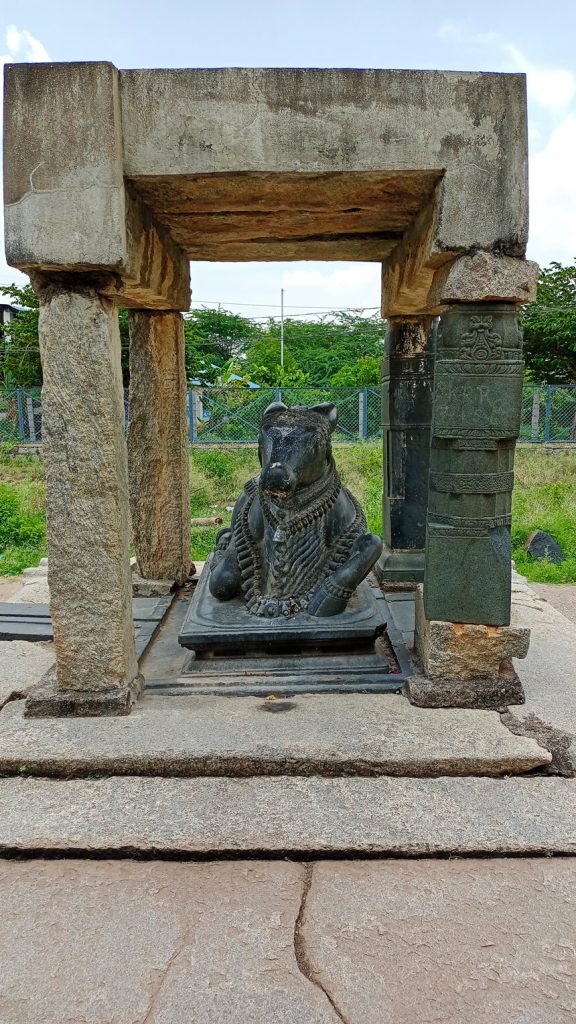
Nandi, the coat of arms of the Nolambarajas. Nandi is located in the mandapam facing all the temples except Sri Siddheswaraswamy temple. Sculptors have made very beautiful with smooth black stone. It is remarkable that Nandi idols and Shivlingas are being found wherever excavations are carried out in the surrounding areas of Saka Hemavati.
It seems that all Nandus are made in their own style. It is the artistry of the sculptors to shape Nandi, who is majestically rising, with garter belts and necklaces on her head, body and neck. It is very sad that all Nandis have no ears at present and let us know the secret collected by the thugs.
If you look closely at the entrance of the famous temple Doddeswara Swamy Alaya on both sides, in the sculptures of the dancers, the Shilcha on the left gives a signal to look right, while the Natyamani on the right bends to look at the left ear giving a nice signal. There is a square hole in the center of the ear that may be studded with precious diamonds. People here say that the miscreants who stole those precious diamonds broke the ears of all the Nandus of Hemavati on the same night.
But it is reported that valuable diamonds were stolen from all of them.
It is a fact that the inner ear of all the Nandis here has this kind of square-shaped Malleswara Swamy and Doddeswara Swamy temple nandi stole the diamonds of both the ears, and the echo of the dhan dhan mane of the Nandi in front of the Virupaksheswara temple is wonderful. The sound of the stone used for this Nandi statue is a proof of the fine vision of the sculptors of that time.
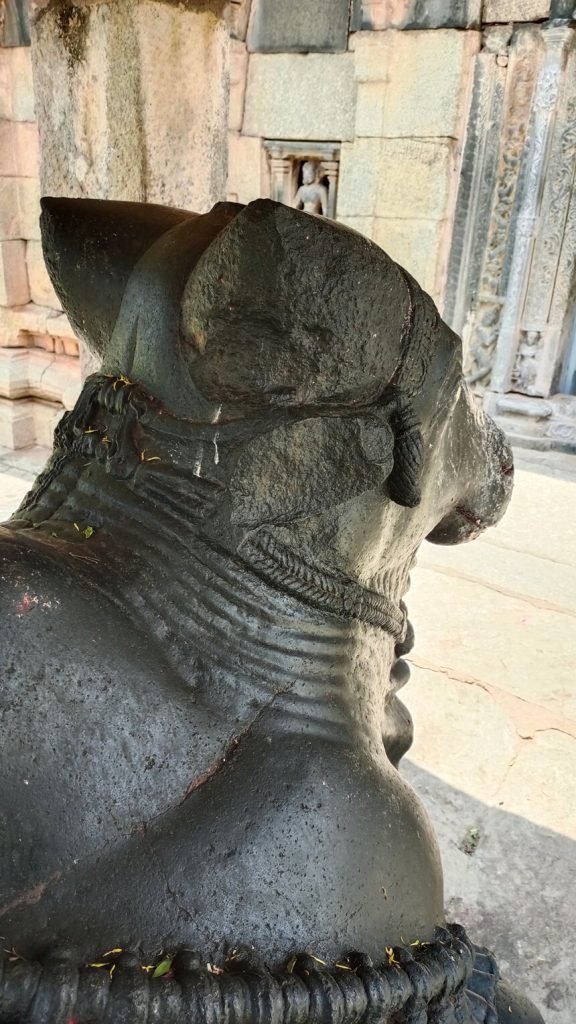

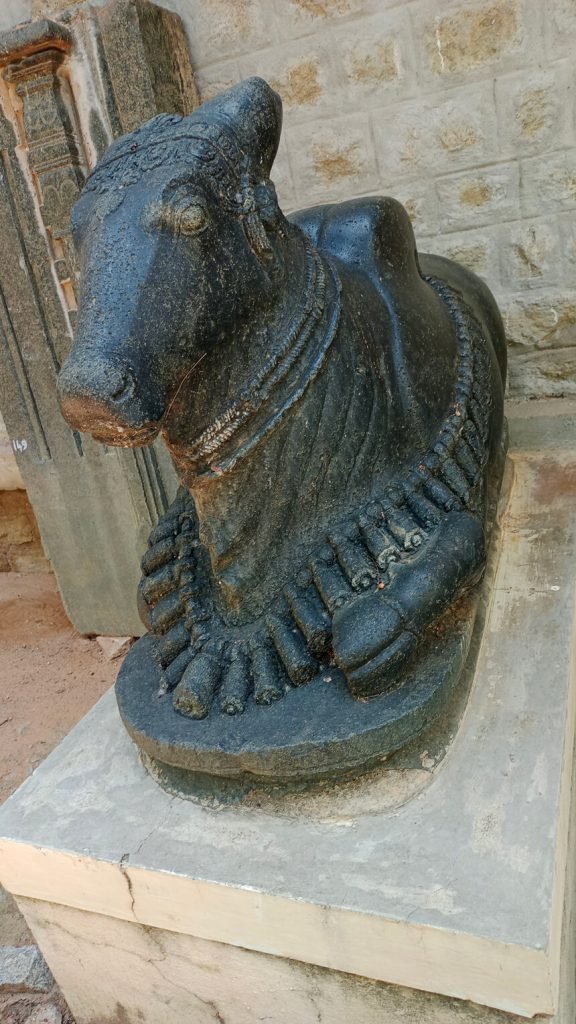
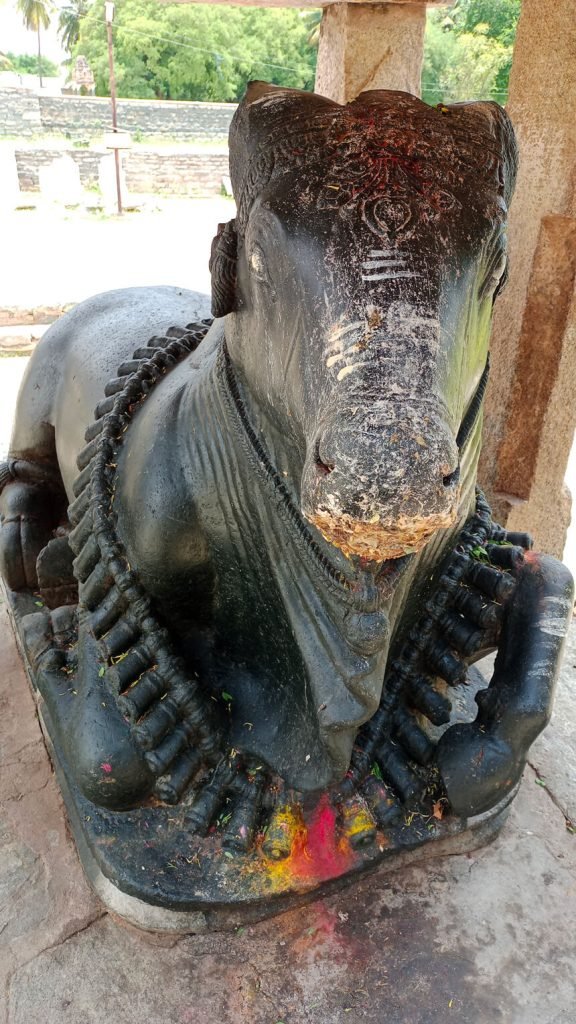
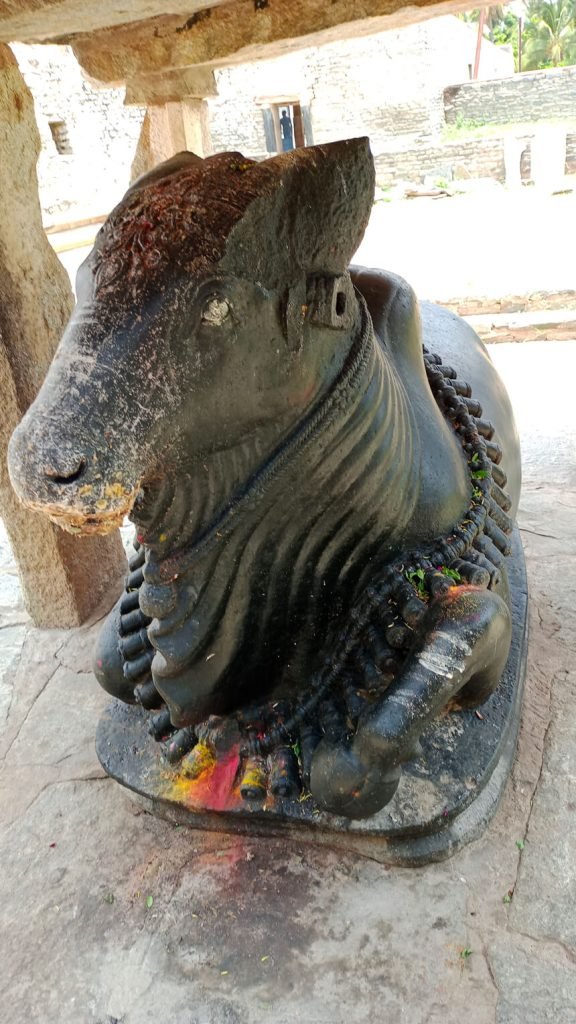
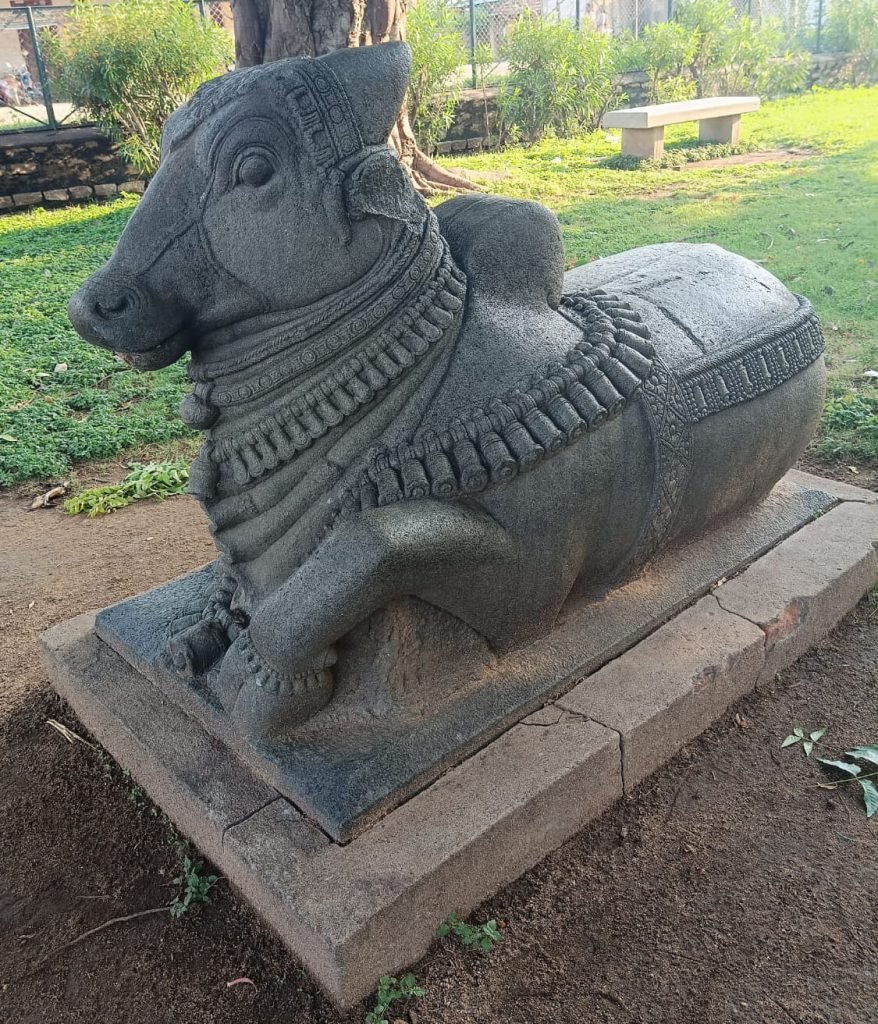

At the site of Mulgund in Dharwad district, there is a Kalabhairava temple that served as a Kalamukha center in the mid-tenth century and beyond. Inside the temple is an enormous six-armed Bhairava, 3.50 meters high, and two four-armed female attendants. A small goat-headed image from the base between Bhairava’s feet has been identified as Virabhadra. Kalamukhus worshiped Veerabhadra in the form of Bhairava
And this suggests that the idol at Mulgund reflects the period practices. The sculpture and the temple belong to the latter part of the tenth century.
Virabhadra, who is known for disrupting the sacrifice of Daksha, holds prominence in the Pasupatas. In some Purana texts, Virabhadra and Bhairava are occasionally used interchangeably or seen as synonymous. There is a suggestion that Henjerappa is synonymous with Yajnareshvara, Virabhadra. Although nothing matches Henjerappa’s majestic stature, the survival of many Bhairava images of the Nolamba period can be attributed to the periodical ritual requirements. It is possible that the Kalamukha rituals at Hemavati necessitated the worship of Bhairava, hence his presence in the sanctum sanctorum of the Siddeshvara temple. Alternatively, Pasupata rituals may call for the worship of Virabhadra. In Indian art, images often deliberately have multiple interpretations. Henjerappa may be both Virabhadra and Bhairava, worshiped by Kalamukhus and/or Pasupats. However, without clear information on the Kalamukha rituals or concrete evidence of their existence, along with the corresponding Pasupatas at Hemavati, this question remains unanswered.
The dual nature of Henjerappa, as understood today, both protective and destructive, effectively strengthens my proposition that Henjerappa’s original role was as the head of Henjeru during the Nolamba period. As the royal deity of one or more Nolamba kings
May be and conformed to Pasupata/Periodic customs, Henjerappa exemplifies an image designed and visualized to meet the needs and expectations of critical agencies in the dynamics of the Nolamba polity. Moreover, Henjerappa should now be recognized as the creation of local artisans who worked during the Nolamba period, creating the image based on their own skill and understanding. The surface design of the image and the various components and motifs used to create the image do not indicate any imitation or reliance on models from more prominent dynastic centers. Hence, this Bhairava image stands as just one example in the history of Nolamba monuments.
In Hemavati
Famous Shiva Temples
Siddeshwara Swamy Temple
During Chaitram and Vaisakh months, it is wonderful to see the sunlight touching the 5.8 feet tall Siddeshwara Swamy during the dusk.
Doddeswara Swamy Temple
Sri Doddeswara Swamy Temple has Saiva Purana stories as well as Vishnava Purana stories engraved in them. Opposite the largest Nandi temple.
Chela Bhairava Swamy Temple
It is believed that if jaggery is offered in the temple of Sri Chelabhairavaswamy, the Swami will protect their house from snakes, scorpions and any other poisonous insects.
Malleswara Swamy Temple
In the Malleswara Swamy temple, the lingam shines brightly with the rays of the morning sun. It is on the left side of Doddeswara temple.
Virupaksheswara Temple
The temple is famous for its sculpture. This temple is on the right side of Doddeswara Swamy temple. In the mandapa opposite to Shivalinga, Nandi's hand makes a sound.
Navakotamma Temple
People here worship Navakotamma as the younger sister of Lord Siddeshwara. People here perform puja to Navakotamma to get children.
